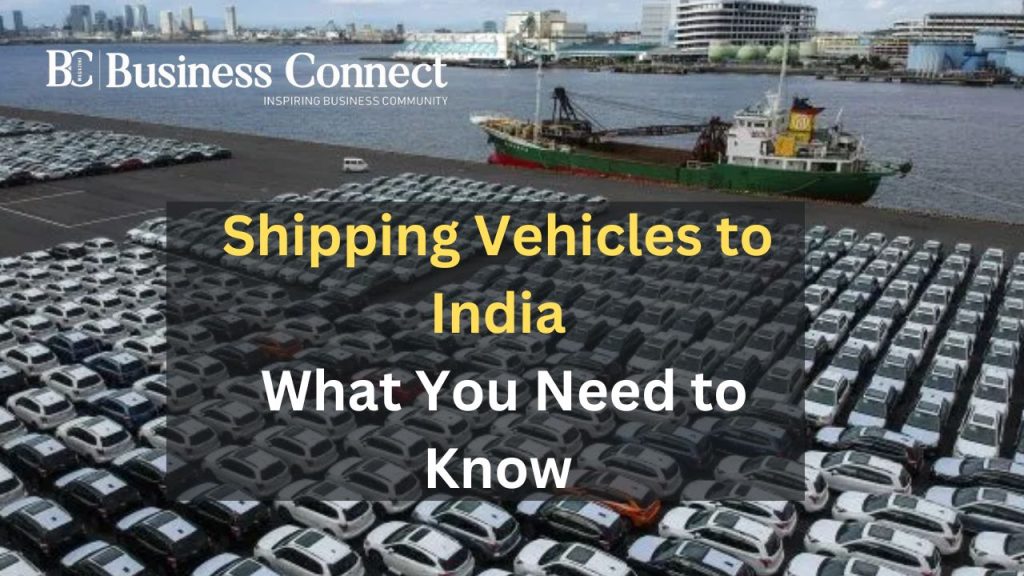Shipping Vehicles to India: What You Need to Know
If you’re planning to move from the United States to India, one of the biggest challenges you might face is transporting your personal vehicle. Shipping a car, truck, or motorcycle across continents and oceans can be a complex process with many logistical considerations. However, with careful planning and the right guidance, you can navigate the process smoothly and ensure that your vehicle arrives at its destination safely.
In this comprehensive guide, we’ll walk you through the step-by-step process of shipping a vehicle to India from the USA, highlighting the key requirements, documents, and best practices to ensure a hassle-free experience.
Step 1: Choose a Reputable Shipping Company
The first and most crucial step in the process is selecting a reliable and experienced shipping company. Look for companies that specialize in international vehicle transport and have a proven track record of successful shipments to India. Research their credentials, read customer reviews, and compare quotes from multiple providers to find the best fit for your needs and budget.
Find the best shipping services here: https://www.sflworldwide.com/worldwide-destinations/shipping-to-india
Step 2: Prepare Your Vehicle for Shipping
Once you’ve chosen a shipping company, it’s time to prepare your vehicle for transport. Here are some essential steps to follow:
- Clean your vehicle thoroughly, both inside and out. Remove any personal belongings, and ensure that the vehicle is free of any loose items that could shift during transit.
- Check the battery and ensure that it’s in good working condition. It’s recommended to disconnect the battery terminals to prevent any potential electrical issues during shipping.
- Inspect your vehicle for any existing dents, scratches, or damage, and document them with photographs. This will help you identify any new damage that may occur during transport.
- Top off all fluids, including engine oil, coolant, and brake fluid, to prevent any leakage during shipping.
- Ensure that your vehicle’s tires are properly inflated and in good condition.
Step 3: Gather the Necessary Documents
To ship your vehicle to India, you’ll need to provide the following documents to the shipping company and Indian customs authorities:
- Original vehicle registration certificate or title
- Valid driver’s license
- Purchase invoice or proof of ownership
- Passport copy
- Residential address proof in India
- Indian Customs Cargo Service Provider (CCSP) registration
- Import license
Step 4: Choose the Shipping Method
There are two primary shipping methods for vehicles: Roll-on/Roll-off (Ro/Ro) and Container shipping. Ro/Ro involves driving the vehicle onto the ship’s deck, while container shipping involves loading the vehicle into a secure container.
Ro/Ro shipping is generally more cost-effective, but container shipping offers greater protection from the elements and potential damage during transit. Your shipping company can advise you on the best option based on your specific requirements and destination in India.
Step 5: Understand Customs Regulations and Duties
When importing a vehicle into India, you’ll need to comply with the country’s customs regulations and pay the applicable duties and taxes. The duties and taxes can vary depending on factors such as the vehicle’s age, engine displacement, and whether it’s a permanent or temporary import.
It’s essential to work closely with your shipping company and a customs broker to ensure that you have all the necessary documentation and understand the applicable fees and charges. Failure to comply with customs regulations can result in delays, penalties, or even the seizure of your vehicle.
Step 6: Arrange for Delivery and Registration in India
Once your vehicle arrives in India, you’ll need to arrange for its delivery to your desired location. Your shipping company can assist with this process, and you may need to provide additional documentation, such as a residential address proof, to facilitate the delivery.
After taking delivery of your vehicle, you’ll need to register it with the appropriate transport authority in India. This process typically involves submitting the required documents, paying applicable fees, and obtaining the necessary permits and licenses.
Read More: Why Do Indian Entrepreneurs Want to Move to the UK?
Step 7: Consider Insurance and Additional Services
Shipping a vehicle across the globe can be risky, and it’s advisable to purchase appropriate insurance coverage to protect your investment. Many shipping companies offer insurance options specifically designed for international vehicle transport, covering potential damage or loss during transit.
Additionally, you may want to consider additional services such as door-to-door delivery, which can simplify the logistics and ensure a seamless transition from the port of arrival to your final destination in India.
Final Thoughts
Remember, the key to a successful vehicle shipment is to start the process well in advance, gather all the necessary documents, and stay informed about the latest customs regulations and requirements. With patience and diligence, you can navigate the complexities of international vehicle transport and enjoy the freedom of having your personal vehicle with you in your new home country.
Add Business Connect magazine to your Google News feed
Read Also:
- Best business magazine in India
- Top 10 Most Inspiring Young Indian Entrepreneurs To Look Out in 2024
- Top 10 Technology Magazines
- Top 10 Competitive Exam Preparation Magazines in India
- Top 10 Entertainment Magazines Available in India
- The CEO Magazine Australia & Business Connect Magazine India
- 10 Benefits of Magazine Advertising for Businesses
- India’s Top 10 Business Magazines for 2024


